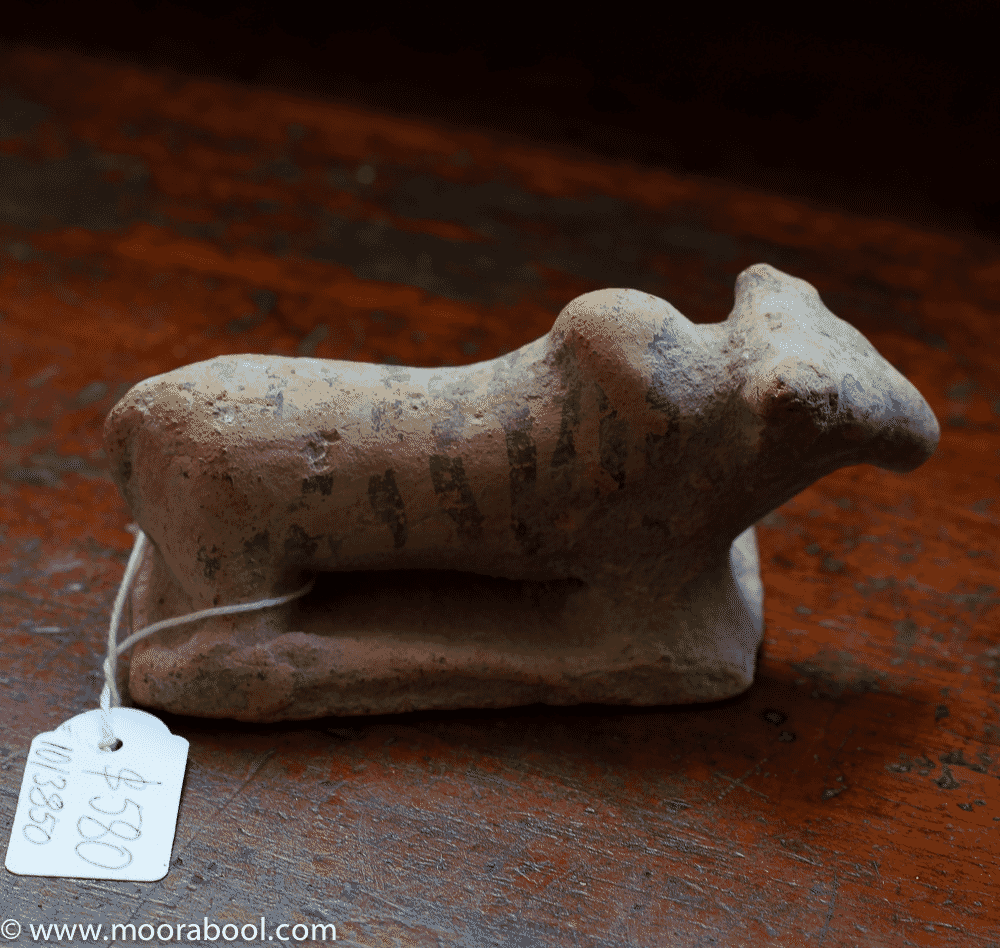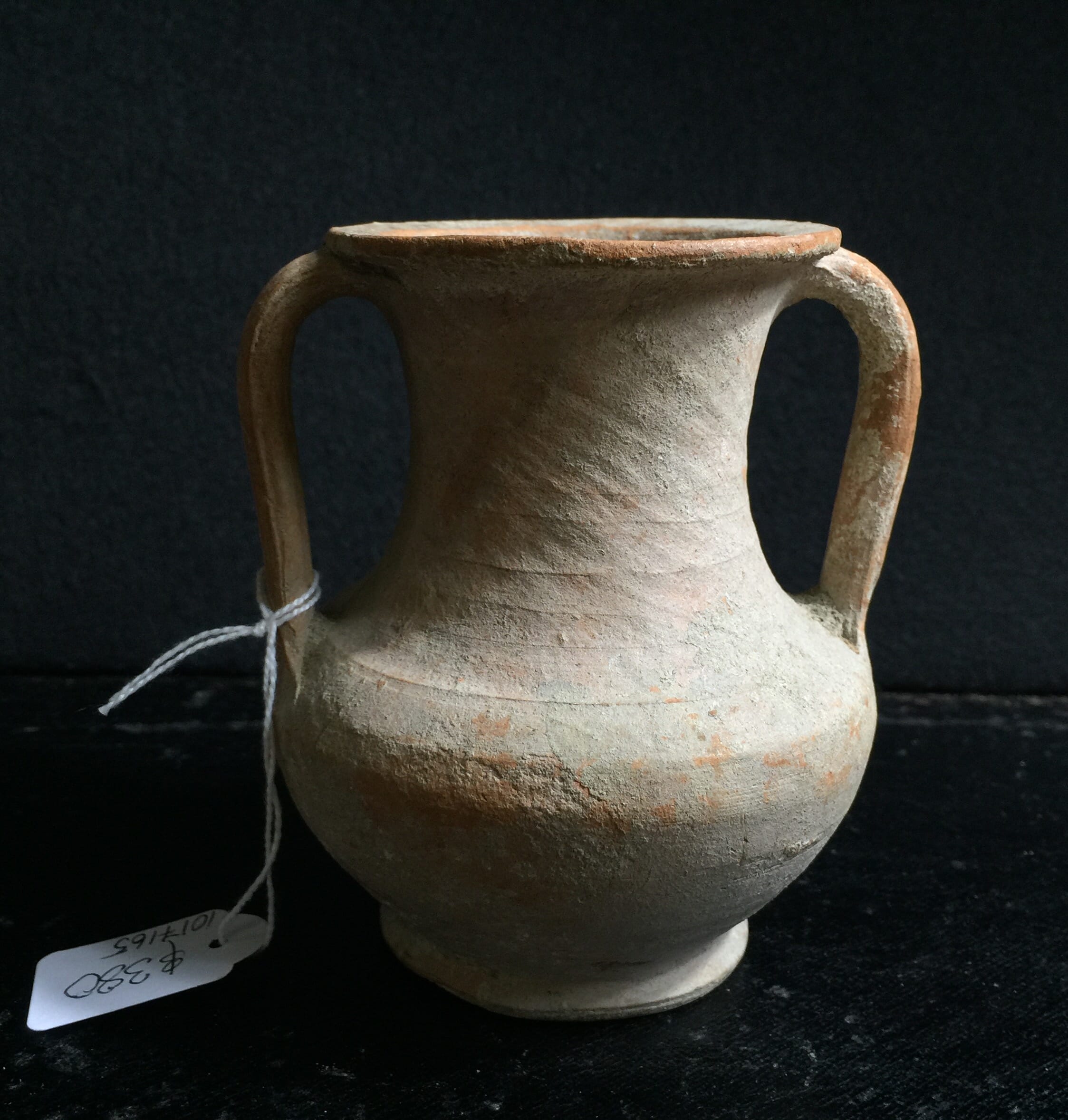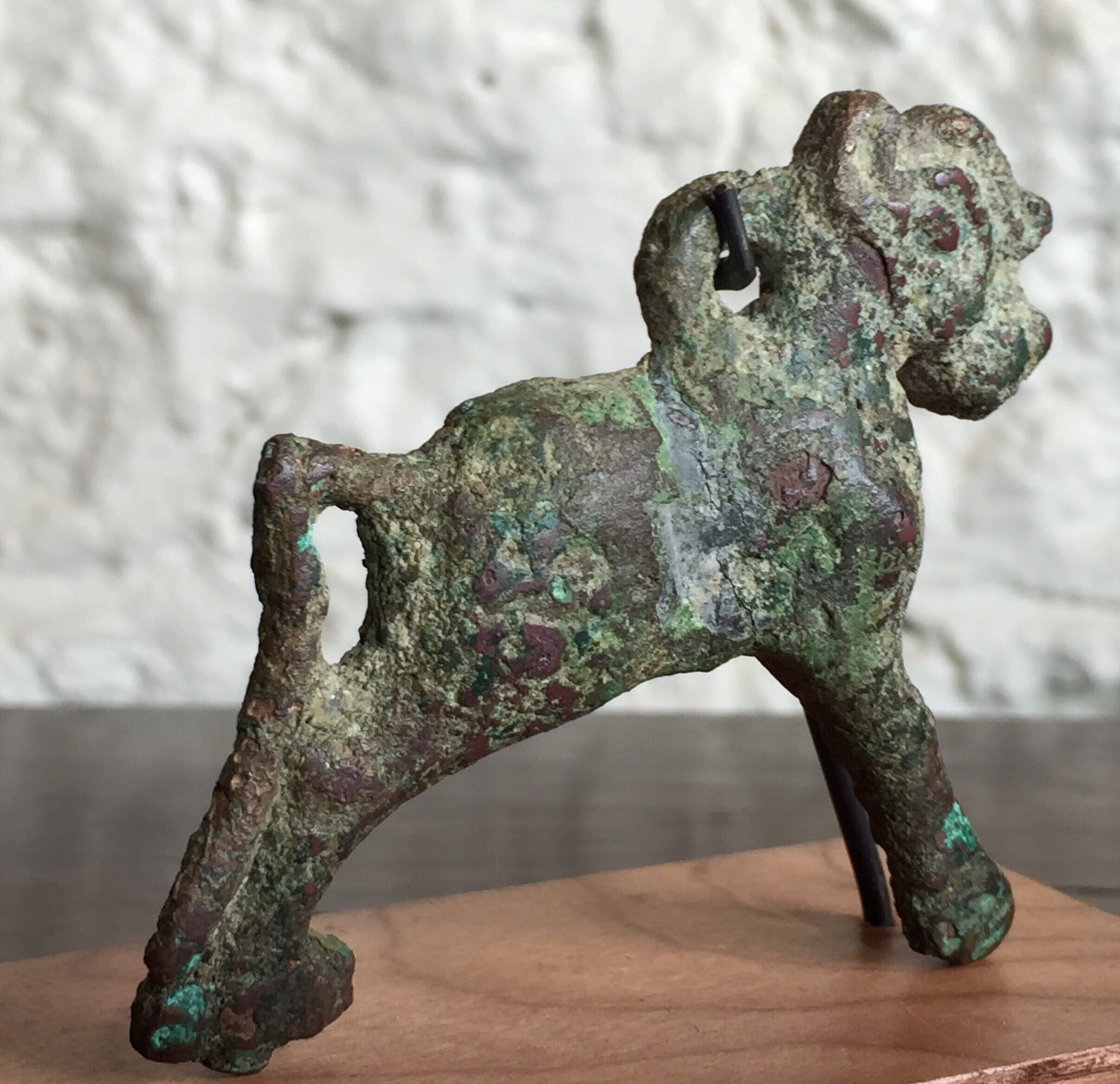Astarte pottery figure, found Tyre, Phoenician/Cypriot, circa 1,000 BC
$965.00 AUD
Pottery figure of the goddess Astarte, the stylised torso shown standing with remaining arm raised, an elaborate dress with raised necklace picked out in dark pigments, the bird-like features framed by a large curved headdress with three pierced holes.
Phoenician/Cypriot,
1st millenium BC
14cm high
Old collection label ‘ 252 / Figurine of the goddess Astarte / Found in Tyre / V Cent. BC’
Astarte was an important goddess of both the Canaanite and the Phoenician cultures, and developed from an earlier Syrian deity, which had its origins in the Sumerian culture, recorded in cuneiform there in the 2nd millennium BC. She was the goddess of War and Sex. The Romans called her Aphrodite…. In the Bible, she is recorded as Ashtoreth, the consort of Baal.
While the old collection label states 5th century BC as the date, the style is much earlier, reflecting the Syrian origin in the beak-like nose and rounded eyes – reminiscent of the bird-like faces of Syrian female figures of the 2nd millennium BC. The Phoenicians adopted Astarte, and produced highly stylised ‘plank’ figures with similar details.
The ‘raised hands’ are an interesting feature that appears on Cypress at the turn of the 1st millennium BC, and could be the origin of this figure – the clay is a similar hue to Cypriot examples. No direct comparable piece could be found. The recording of the origin as Tyre is inconsequential, as the city of Tyre, in modern day Lebanon, was a far-reaching trading port. Masses of Cypriot pottery is found in any excavations there.
The holes were most probably embellished with a perishable material such as fabric or feathers. Another possibility could be small rose flowers – Astarte is sometimes shown with moulded roses, an attribution of hers, and so it is conceivable that a figure like this on a shrine could be furnished with fresh flowers as an enhancement.
| Condition | |
|---|---|
| Size | |
| References |
In stock










